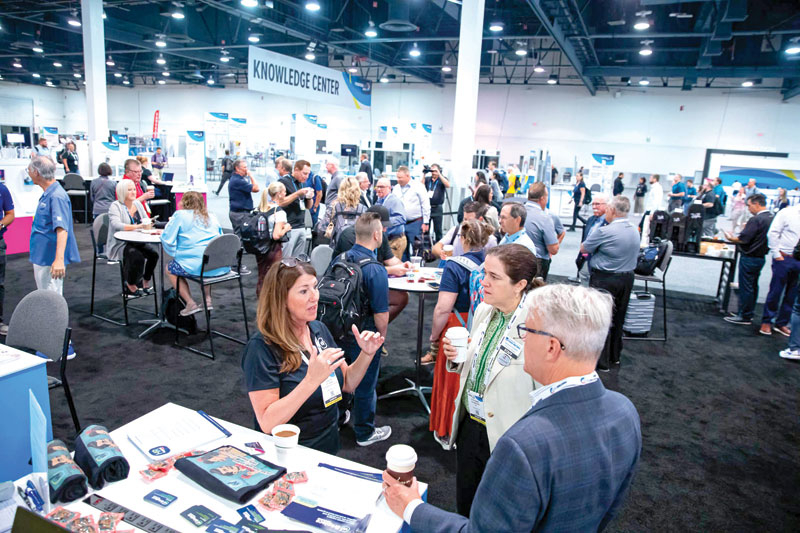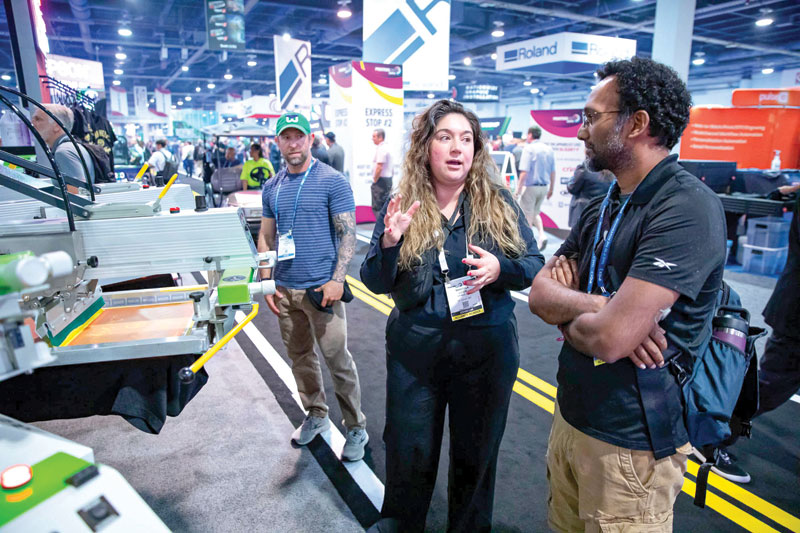
While what we do for women and what we do for the industry may seem separate, they are deeply interconnected. Photos courtesy PRINTING United Alliance
By Marika Gabriel
The printing industry has historically been male-dominated, but there has been a growing movement to encourage and support women in the field in recent years. Organizations such as the Women in Print Alliance (WPA) are at the forefront, creating spaces for women to connect, grow, and lead in this industry.
In this interview with Sign Media Canada, Lisbeth Lyons Black, director of the WPA, shares insights into her work advocating for women in the printing industry. From creating empowering networking events to supporting professional development, Lisbeth highlights the importance of fostering a welcoming environment and providing valuable opportunities for women to thrive in the printing sector.
Sign Media Canada (SMC): What has been the journey of the WPA, and what does the future look like?
Lisbeth Lyons Black (LLB): The WPA started informally several years ago, founded by a dedicated group of women in the industry who recognized the need for an organization to support one another, publicize the opportunities in the printing industry, and create space for women to thrive and grow professionally. The group partnered with PRINTING United Alliance and hosted an annual breakfast or lunch at the PRINTING United Expo, which was widely attended and well-received. But this event was only once a year, and the excitement would fade until the next expo.
Recognizing the need for year-round engagement, the group, again in partnership with PRINTING United Alliance, committed to creating infrastructure, including a newsletter and website, and hiring a professional staff director (myself). The next logical step was to launch a paid membership program, allowing women or companies to sponsor seats for professional development. With support from corporate sponsorships, we can produce higher-level and more content for women, keeping it going year-round.
We officially launched this membership program on August 1, and we’ve sold more than 350 seats so far. It allows women to access quarterly professional development series and other benefits. I was excited to see that Women in Print Australia also launched a similar paid membership program, showing that women in the industry are responding to the need for community support and opportunities to improve their professional acumen and advance their careers.
SMC: How does WPA support women in advancing their personal brands and visibility?
LLB: There are two main pillars of this membership. The first is community building and networking, which is especially important for women in smaller companies or isolated roles, such as being the only woman on a sales team or in the C-suite. They value connecting with other women in similar positions in different companies, regions, or even countries. This sense of community is a key part of the WPA.
The second pillar is workforce development. From my experience as a chief lobbyist for the printing industry, a recurring issue has been the struggle to find qualified workers, especially as older, predominantly male workers retire. Expanding the workforce to include more women is vital. Women have long worked in print, but the industry has historically been perceived as male-dominated, partly due to physical job requirements. However, many of these barriers have been removed as printing becomes more digital.
We aim to demonstrate that there are successful women in various industry segments, showing younger women, those returning to the workforce, or women transitioning from other industries that there are pathways to success in printing. The industry is becoming more gender-friendly, and the WPA can help highlight these opportunities.
This approach benefits both women and the industry. Women are drawn to workplaces that align with their values, such as gender equality and sustainability. By supporting initiatives like the WPA, companies signal their commitment to creating an environment where women can thrive. This attracts the next generation of workers and demonstrates a genuine commitment to diversity beyond just optics.
So, while what we do for women and what we do for the industry may seem separate, they are deeply interconnected.
SMC: What trends in the printing industry are creating more opportunities for women and attracting them to alliances like this?
LLB: One major shift we’ve seen is the transition to digital print, which has eliminated some physical or perceived barriers that once limited women’s involvement. This has created a more level playing field for women in the industry. Additionally, in the U.S., there’s been a strong push to promote women in STEM, both in education and the workforce, which benefits the printing industry. Many print education programs in the U.S., at both junior colleges and universities, have women making up half or more students. Supporting these programs is key to getting more women into the industry.
The challenge, however, is that while many women enter these programs, not all end up in the printing sector, as the skills they acquire are transferable to other manufacturing industries. This highlights why initiatives like WPA are important. The print industry competes with other sectors for talented workers.
Another trend is the influence of the younger generation, particularly through social media. Many TikToks, for example, focus on unboxing and cool packaging, which has sparked interest in packaging as a part of the print industry. This trend, though small, contributes to the industry’s modern appeal and could bring more women into the workforce.
While I don’t have scientific data, I’ve observed that today’s younger generation—high schoolers and people in their early 20s—are more focused on the esthetics and sustainability of packaging than past generations. This shift, combined with the industry’s growing focus on sustainability, attracts more women to print sectors they hadn’t considered before. The industry’s image has changed; what was once seen as a “dirty” job is now regarded as high-tech and clean. I’ve even taken lawmakers into printing facilities, and they’ve been surprised by how modern and pristine they are. These advancements, particularly the growing interest in sustainability, are making the printing industry more appealing to younger women entering the workforce. Whether TikTok or influencers in the beauty industry unboxing products, packaging plays a big role in consumer choices. Luxury packaging, such as cosmetics or high-end hair products, is a major driver, drawing attention to printed products. I’m not suggesting that everyone should be an influencer, but their focus on packaging has made it more prominent, even subliminally.
For women studying print, the packaging side often feels glamorous. However, as they enter the industry, they might find their passion in other segments, such as wide-format print, out-of-home (OOH) advertising, or even direct mail. That’s why initiatives like WPA are so important, as they showcase the diverse pathways within the print industry. Print touches everything. By exposing women to different print verticals, we help them find their true passion within an industry they may not have initially considered. This variety keeps the industry dynamic and appealing to a wide range of people.
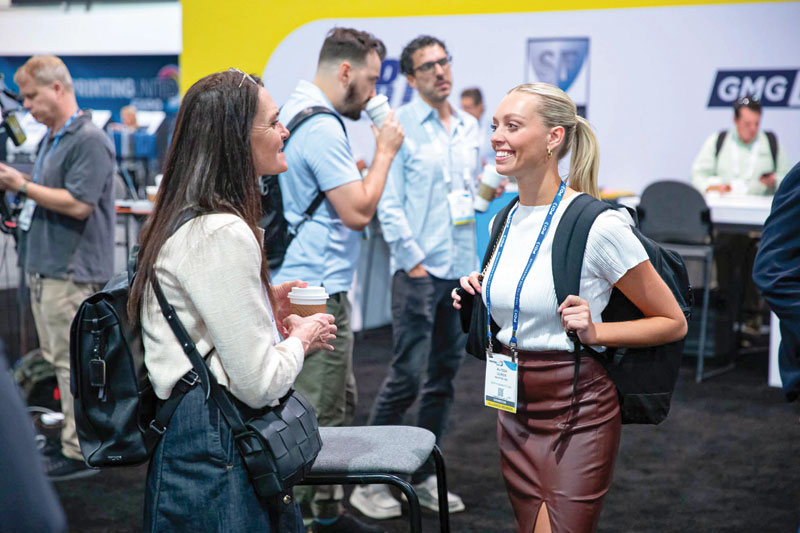
There are two main pillars of this membership. The first is community building and networking, and the second is workforce development.
SMC: How can printing companies attract more women?
LLB: The key thing companies in the printing industry can do is continue promoting the narrative that their workplaces are welcoming and respectful and provide opportunities for women to grow and thrive. Women want the chance to succeed, and many companies say they value this, but there are still issues to address. For example, women in the industry often face microaggressions, like being overlooked in vendor interactions. At expos, for example, a female CEO might be ignored. At the same time, a male colleague is given attention, or women in sales are assumed to be there for administrative tasks instead of their expertise. These issues are not unique to the print industry but are prevalent across various sectors.
WPA works to raise awareness about these challenges, helping ensure the industry doesn’t develop a reputation as outdated or closed-minded. By highlighting these issues, we hope to foster an environment where companies are seen as welcoming and offering opportunities for women.
Many printing companies are small- to medium-sized and lack dedicated diversity and inclusion roles. These alliances offer a turnkey solution for companies, providing professional development opportunities for their female employees. For example, a company can join the WPA, purchasing five seats for $500. This allows their female employees to access professional development resources, such as learning to advocate for themselves, negotiate, create an executive presence on LinkedIn, and more. These opportunities help women feel more committed to their employer, benefiting both the women and the company.
SMC: What is unique about the WPA?
LLB: The WPA stands out due to its strong connection with PRINTING United Alliance, which allows us to access valuable resources and expertise. One of the key advantages of this partnership is having professional female staff advisors, like Onamica Dhar, an economist at PRINTING United Alliance. She volunteers her time to share insights on crucial industry trends such as artificial intelligence (AI), providing content and programming that benefits women in the print sector. This connection with PRINTING United Alliance also enhances our ability to offer advocacy support, especially in workforce development and legislation that benefits women in manufacturing, such as tax changes to support certifications and continuing education.
For members, the WPA provides a variety of benefits, including a free monthly newsletter and paid membership options that offer elevated networking opportunities, special events, and educational programming. For instance, our annual in-person event at PRINTING United has grown significantly, with a sold-out luncheon in 2022 and 2023, attracting hundreds of women. We’re also expanding to regional meetups to give women more opportunities to connect in person, especially those who cannot travel to larger events.
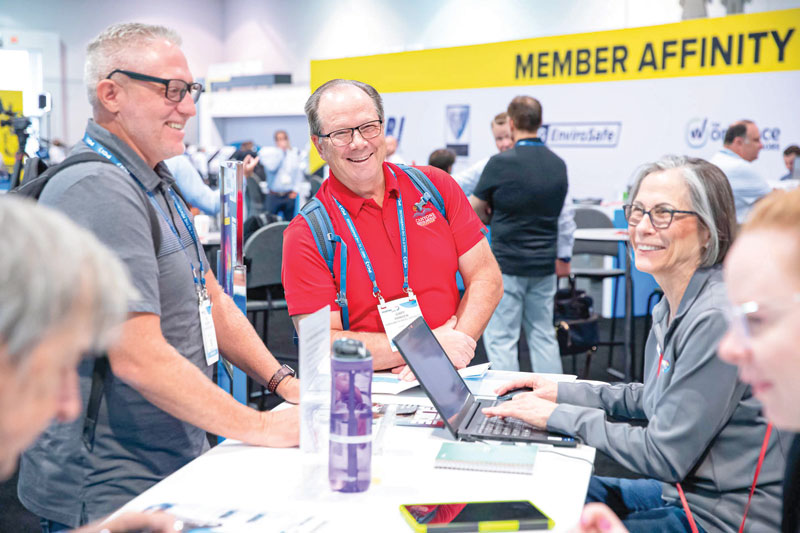
The WPA stands out due to its strong connection with PRINTING United Alliance, which allows us to access valuable resources and expertise.
In addition to these in-person events, we offer virtual professional development workshops—our quarterly sessions, for example, cover topics such as imposter syndrome and intergenerational management. These workshops are live and then archived on our website for ongoing access. Our Q1 workshop will focus on managing different generations in the workplace, which is especially important as companies now often have four generations of employees. These resources provide ongoing professional development, helping our members grow in their careers while strengthening the print industry.
SMC: How important are these initiatives?
LLB: The concept of being “the only” in the workplace, like being the only woman on a sales team or the only female leader at the executive table, can be quite isolating. While women may have strong relationships with their male colleagues, there are unique aspects of the female experience that are important to address together. For instance, one professional coach I worked with called it “cuss and discuss,” which captures the value of having a space where women can vent and problem-solve together. This is essential because there are aspects of work and life, such as the challenges that come with, say, menopause, that women may feel more comfortable discussing with other women who understand their experiences.
Having a forum to discuss issues with fellow women allows for support and understanding. Women-only spaces help provide solutions, empathy, and solidarity, especially for those who may feel alone in their work environment.
SMC: Were there any resources or programs from the WPA this past year that particularly resonated with women?
LLB: The WPA events have been extremely popular, with women eager to connect in person. For example, in 2023, their event in Las Vegas, Nev., sold out with a waiting list. These in-person gatherings provide women with a chance to discuss relevant topics. Their virtual workshops, such as the Q4 session on imposter syndrome and the Q1 workshop on intergenerational management, also encourage networking and learning. The use of chat features during virtual workshops allowed for real-time interaction, further enhancing the community feel. Additionally, by offering free student memberships, the alliance fosters a welcoming space for the next generation of women entering
the industry.
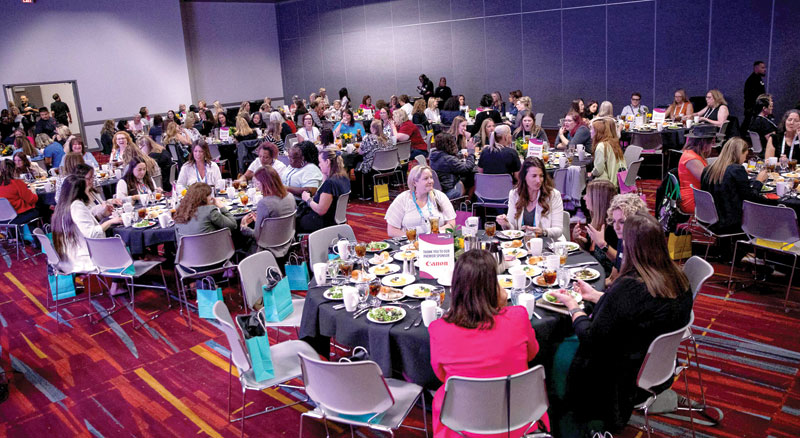
The annual WPA in-person event at PRINTING United has grown significantly, with a sold-out luncheon in 2022 and 2023, attracting hundreds of women.


